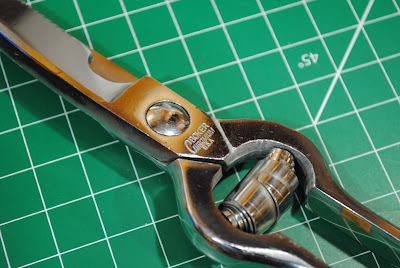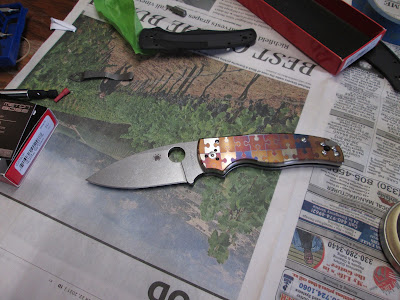Is it too late to brag about Christmas presents?
My wife got me a Microtech Zombietech 85 OTF
for Christmas and backed it up with a vintage Zombietech tee-shirt. It is way too cool and I’ve wanted one for
years!
I’ve always liked Microtech. They make a high-end knife with tight precision. That drives the price up, but makes for an amazing knife. Knife designer Greg Lightfoot has remarked that these tolerances are what makes Microtech factory knives so close to custom-designed knives: "It has the same quality as a handmade custom."
You might not be familiar with Microtech
Knives. You should be ashamed of yourself.
Beginning in 1994, Susan and Anthony
Marfione created Microtech with a simple idea: Create the best knives possible. Like many entrepreneurs they started in their
apartment and later moved to a storage bay in Vero Beach, Florida.
Now headquartered in Western North
Carolina Microtech Knives operates with the same mission statement: Make the best knives possible. This concept has grown the company to over
150 employees.
Quality stands out and there is a market
for it. Microtech along with Benchmade
is credited with the responsibility for the resurgence in the popularity of
tactical automatic knives in the 1990s. These
knives are seen as precision-made tools utilizing powerful springs and high-grade
components. They aren’t toys, as many auto
knives are perceived.
I have a few other Microtech knives from the
Blade Shows, but nothing this fancy. I’m
really happy to have it.
On Christmas Eve Karen and I cooked pheasant paprikas so I had to dissemble the pheasant. I used my CRKT Taco Viper and it worked great.
 |
| Pheasant and CRKT's Taco Viper |
Since it was a new knife, I pulled out the poultry shears, just in case. My wife got the shears from her mother, so they have to be at least 60 years old. I know my mom had one, but I believe it is with one of my sisters. At least I hope so. It’s been a while since I needed poultry shears so I took a few moments to check them out.
Guess what? They are made by Boker in the USA. Boker is an underappreciated knife line.
 |
| Boker and Chromium |
Böker traces its origin to the 17th century as a tool maker in Germany. By the 1860s the company had fractured with a branch of the family emigrating to North America and setting up plants in Canada, New York, and Mexico. The German and North American factories produced similar knives and used the "Tree Brand" trademark.
 |
| Boker Poultry Shears |
WWII rolls up and we can’t have a German company operating in America. The outcome, Boker America, no umlaut, is established. During the war the Solingen factory was destroyed and "Boker USA" took control of the trademark until the German factory was rebuilt in the 1950s. It’s difficult for me to understand, but even during war, business law rules.
In the 1960s and 1970s, the company changed
hands several times, with the New York facility (Hermann Boker & Co)
shutting down in 1983. In 1986, Boker
reacquired the rights to the American brand and Boker USA was started in
Denver, Colorado for US production. They
also make knives in Germany, China and Argentina.
All three companies, Microtech, CRKT, and
Boker make nice knives. You owe it to
yourself to check them out.






























